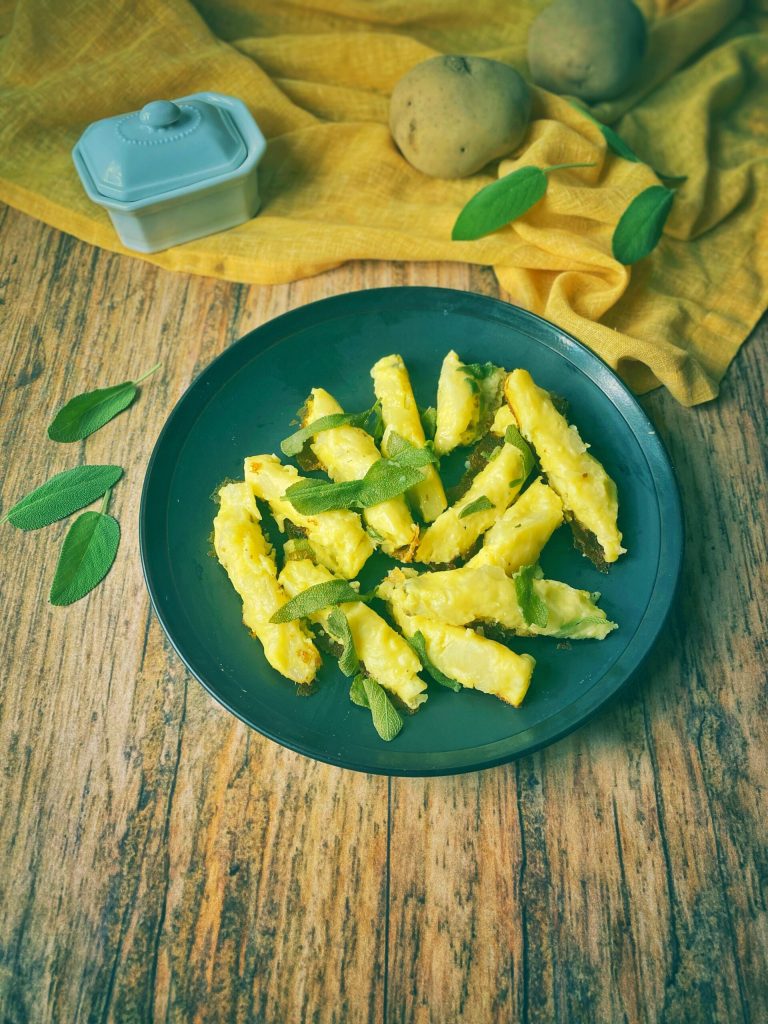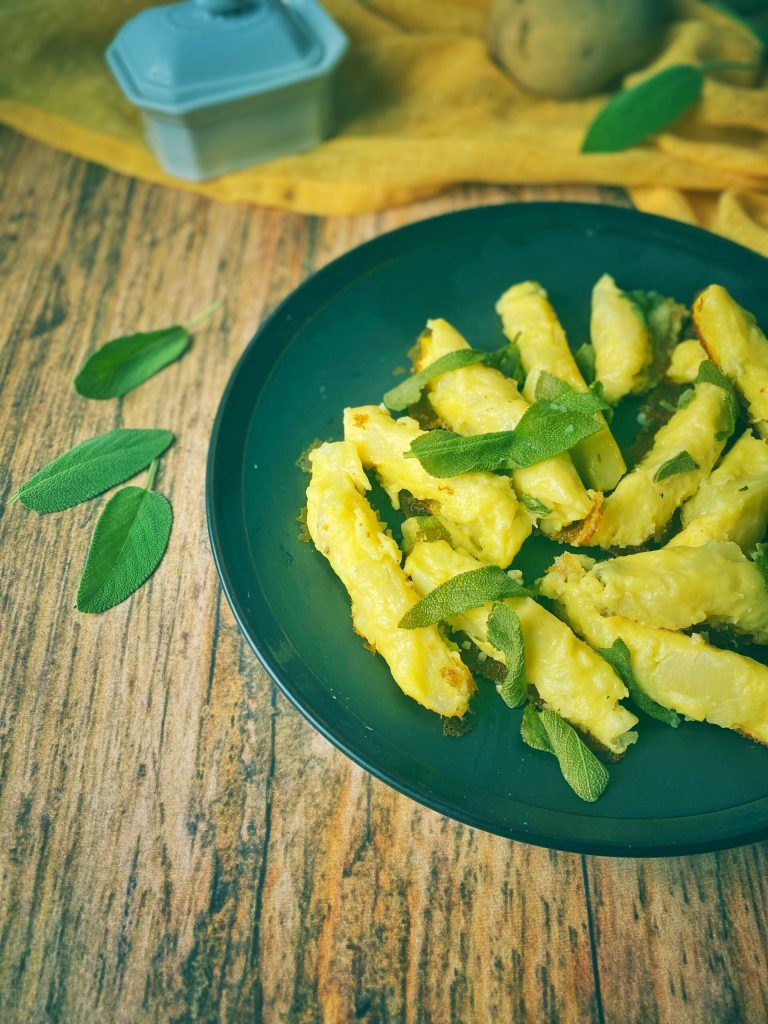Schupfnudeln, finger noodles, or skubanki, are a dish from Southern Germany, Austria, and Czech cuisine, available with different names, recipes, and regional variations made with rye and wheat flour, eggs, and, since the introduction of potatoes in the 17th century, with a potato dough.
Traditionally, they are handmade and often served with sauerkraut, but there are numerous variations, including sweet ones (with poppy seeds or sugar and cinnamon, or with apple sauce).
Usually, a long, thin sausage is made from the dough, cut into pieces, and the ends are shaped by hand into points.
The exact shape can vary; the Upper Swabia Schupfnudeln, for example, are rather thin and long.
The common denominator is the moderate size, with an elongated shape (about 2 inches) and the fact that they are then boiled in water for a few minutes or fried with sauerkraut and finely cut or smoked bacon or butter and sage sautéed in a pan.
The word “nudel” was originally a modification of knödel and thus part of a wide tribe of German words using the kn- sound to express a thickening (Knot, Knolle, Bud, Knauf, Knopf).
With schupf (or finger noodle), it refers to the shape and appearance of the pasta, not its composition. Schupf derives from schupfen in the dialect and means “to roll.”

- Difficulty: Easy
- Preparation time: 10 Minutes
- Portions: 2 People
- Cooking methods: Boiling, Stove
- Cuisine: German
- Seasonality: All seasons
Ingredients
- 14 oz potatoes
- 2 eggs
- 1 cup flour
- to taste salt
- to taste butter
- to taste sage
Steps
Boil the potatoes, add the eggs, salt, and flour.
Make a long, thin sausage, cut it into pieces, and shape by extending and closing the ends.
Boil in salted water until they float and season with butter and sage or sauté in a pan with butter and sage and breadcrumbs.

FAQ (Questions and Answers)
What are the other versions of Schupfnudeln?
Schupfnudeln are common in Baden and Swabian cuisine.
The name Bubespitzle (due to the resemblance of the noodles to a boy’s penis) and Baunzen originate in the Palatinate and also in Alemannic cuisine.
In old Bavarian cuisine, Schupfnudeln are also called noodles, Dràdewixpfeiferl or potato or Erdpfebaunkerl, in the Upper Palatinate also Schopperla or Schoppalla.
In Vorarlberg cuisine, they are primarily known as Grumpieranüdile.
In the Odenwald, they are called Krautnudeln.
The Bauchstecherla, popular in Franconia, are relatively thin and pointed.
The name Stöpflerle derives from the use of the potato masher, widespread in Würzburg in Lower Franconia and the Franconian part of Northern Baden.
In Austrian, Bohemian cuisine and sometimes also in old Bavarian cuisine, Schupfnudeln are served sweet as poppy seed noodles or schulanky, in Czech as Šulánky and Škubánky (pl.).

